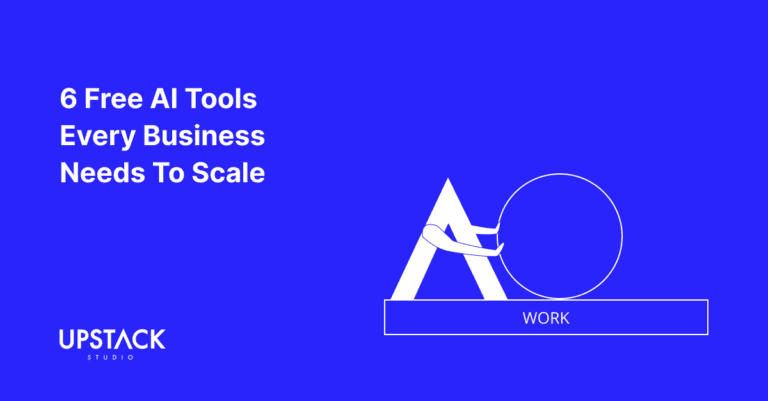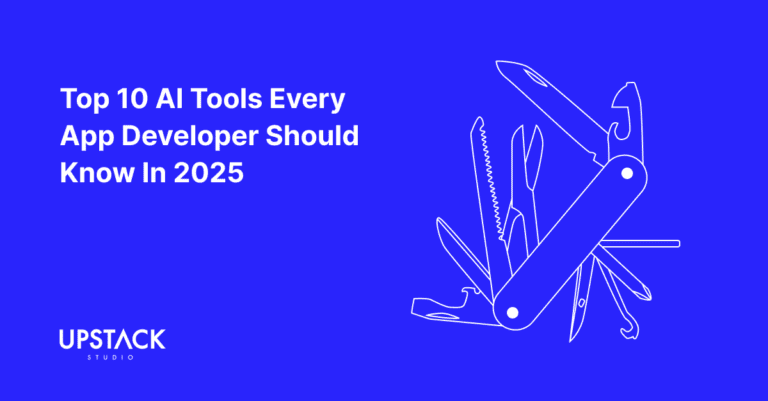What does one do upon discovering a particularly dank meme?
Send it straight to their friend group chat!
This post is the same thing, but a nerdier app developer’s version.

We just want to nerd out over some cool GPT-4 use cases with you guys.
No lecturing.
No tips.
Just cool shit people are doing with GPT-4 that made us go “Damn, wish we’d thought of that!”
Differences between GPT-3 & GPT-4
We’ve seen some amazing apps and SaaS that leverage GPT3 and 3.5.
Now GPT-4 is out, and it’s everything GPT-3 is – and so much more.
As great as GPT-3 is, it only works off of 175 billion parameters.
‘Parameters’ here means the number of biases the AI model uses to understand input and generate responses.
Generally, more points of bias equal better perceptiveness and accuracy.
GPT-4 works off of 100 trillion parameters – in theory making it a million times more perceptive and capable of connecting dots compared to GPT-3!
Other upgrades include:
- analyzing and understanding images
- answering questions based on image input
- being trained on a larger dataset
That means more creativity and factual accuracy, which translates to better problem-solving.
And people have found quite a few problems for it to solve – here are seven of our favourite GPT-4 use cases:
GPT-4 Use Case 1: Wolverine
Our bias as app developer is showing, but damn this thing is cool.
As of now, Wolverine only exists as a Python script you can find on GitHub.
It has two USPs – first, the coolest name for a SaaS ever.
Second, it uses GPT-4 to fix Python bugs in freshly written code at runtime and keeps re-running the code until everything works as intended.
Today I used GPT-4 to make "Wolverine" – it gives your python scripts regenerative healing abilities!
— BioBootloader (@bio_bootloader) March 18, 2023
Run your scripts with it and when they crash, GPT-4 edits them and explains what went wrong. Even if you have many bugs it'll repeatedly rerun until everything is fixed pic.twitter.com/gN0X7pA2M2
Freshly written scripts are infested with bugs; it takes just one missing letter for functions to go undefined.
If this is a key function, the script will crash.
Wolverine:
- runs your script,
- detects errors,
- asks GPT-4 for solutions,
- explains what went wrong,
- makes changes based on GPT-4 input, and
- runs the script again, repeating steps 2 – 4 until the script is running properly.
This debugging on steroids is marketed as ‘self-regenerating’ like the X-Men hero – hence the name.

As a concept, this will save developers a ton of time and headaches.
GPT-4 Use Case 2: DoNotPay

DoNotPay calls itself ‘the world’s first robot lawyer’.
A bit strange – aren’t all lawyers heartless machines?
DoNotPay integrates GPT-4 and AutoGPT under their internal chat system to automate legal processes like parking tickets, cancelling auto-debiting subscriptions, and seeking refunds, thereby helping users save money.
You can find a full list of features on their site – we stopped counting after 100.
What we really like is a feature called ‘Find me money’ where DoNotPay hunts down potential money you’re entitled to or expenses you’re paying unnecessarily.
DoNotPay CEO Joshua Browder recently tweeted about how the app saved him +$217.85 in 24 hours without him doing much of anything.
I decided to outsource my entire personal financial life to GPT-4 (via the @donotpay chat we are building).
— Joshua Browder (@jbrowder1) April 29, 2023
I gave AutoGPT access to my bank, financial statements, credit report, and email.
Here’s how it’s going so far (+$217.85) and the strange ways it’s saving money. (1/n): pic.twitter.com/JO9p1A5ipc
200 bucks aren’t really worth it if you have to hire a lawyer.
DoNotPay does it at the push of a button for $36 every two months.
DoNotPay is clearly targeting the US market, but the legal profession is outdated the world over – so if you live outside the US, a Do Not Pay specific to your country could be a profitable SaaS idea.
GPT-4 Use Case 3: SnoopStein
We go from destabilizing elitist legal services to something less serious – but still (kind of) useful.

SnoopStein is a Twitter bot powered by GPT-4.
He’s been prompted to reply in the style of world-famous rapper Snoop Dog combined with the physicist theories of Albert Einstein whenever someone tags him on Twitter.
You’re probably wondering how that’s supposed to be useful.
Well, the actual use case we want to share is the guide by MindsDB on how you can build your own custom GPT-4 Twitter bot.
Two very real benefits:
First, it’s a fun way to practice making your own machine-learning model and connecting it to other SaaS via API.
Second, we see great potential in creating social media bots for businesses to stand out.
Case in point: the official Wendy’s Twitter is famous for roasting everything.

We shit you not – they even have their own subreddit with over 20 thousand members.
A GPT-4 powered bot with your company’s Twitter handle can be a low-effort high-return solution to charm the Internet and raise your brand awareness.
Or you can use it for high-quality shitposting – the choice is yours.
GPT-4 Use Case 3: SnoopStein
Watermelon is a collection of a few different products but we’re looking at their GPT-4 solution.

They’ve built Pulse – a super simple and user-friendly interface for businesses to build their own personalized chatbot, powered by GPT-4 and trained on their business specifics.
You can teach the bot:
- what your business is about,
- services and promotions you offer,
- what kind of tone and language the bot should reply in
- keywords from customers that trigger certain actions
Remember, there is a machine learning model behind this, so you can train the bot even further by testing it and providing feedback on how to improve.
The chatbot has automatic integration with WhatsApp, Facebook, Instagram, and your website.
All with zero coding.
Check out Watermelon’s customer case study page and you’ll see that they’ve really got something good going on here.
GPT-4 Use Case 5: Dragon Ambient eXperience Express
If Wolverine has the best name, this one has the worst – it reeks of corporate speak.
In terms of application, we think it blows everything else on this list out of the water – it can save lives.

We’ll just call it DAX and FYI, it’s owned by Microsoft.
DAXis a speech recognition and scribe software integrated with GPT-4.
It assists medical professionals by recording real life or online patient consultations and documenting them automatically.
On older versions of Dragon, the notes were manually reviewed before being uploaded into a stored database, usually after about four hours.
With GPT-4’s advanced reasoning and natural language capabilities, the notes are returned in seconds.
Of course, the doctor still needs to review the notes and they have the final sign off.
However, less paperwork for medical staff means more time for patients.
Or, you know, maybe that extra time can now be used for rest – physician burnout is a real thing, and any help they can get, we say give it to them.
That name though – ugh!
GPT-4 Use Case 6: Elicit
This is going to be the nerdiest entry on this list – but the world needs nerds.
And nerds need Elicit!

Elicit uses GPT4 to automate research workflows, like parts of literature review.
It can
- find relevant papers without perfect keyword match
- summarize takeaways from a paper specific to your question, and
- extract key information from papers
Those are its core features, but it can also help with brainstorming and text classification.
The founders have a diagram of how it works,

Elicit was launched in 2022 and with GPT-3 alone it was already able to carry out summarizing and extraction.
In 2023 they started using GPT-4.
Users can now group summaries / extractions by concept, making it far easier to filter search results and hunt down relevant source material.
We’re “pivoting” Elicit with GPT-4 😉
— Jungwon (@jungofthewon) March 14, 2023
Elicit in 2022 took unstructured text in papers and structured it into a table.
Elicit in 2023 will take this structured text and enable you to “pivot” it, grouping it by concepts.
Sign up here: https://t.co/9hyYcQHB04 pic.twitter.com/yWpV7Pg3VB
Anyone who’s done academic research in uni knows what a PITA it is.
So much time is spent looking for source material instead of actually reading.
By the time you’ve got all your material, you’re drained.
Looks like tomorrow’s kids will never know that pain – here’s Elicit’s waitlist.
GPT-4 Use Case 7: rizzGPT
After we were done compiling this list up to number six, we realized something.
It didn’t have enough rizz.

Everything we’d put together was either about making the world a better place or enhancing customer experiences.
That’s fine – but it’s not gonna get you laid.
This one just might.
Say hello to rizzGPT – one of the most unique applications of GPT-4 we’ve seen.

We’ve all gone down the SaaS rabbit hole and overlooked hardware – but not the makers of rizzGPT!
This is how the glasses work:
- A monocle-like device containing a camera, microphone, and high-resolution display that can output text by GPT-4 snaps onto a pair of glasses.
- The microphone picks up speech and sends it to OpenAI’s Whisper.
- That generates texts, prompts GPT-4 and displays answers in a matter of seconds.
Here’s a short clip of it in action:
say goodbye to awkward dates and job interviews ☹️
— bryan (@bryanhpchiang) March 26, 2023
we made rizzGPT — real-time Charisma as a Service (CaaS)
it listens to your conversation and tells you exactly what to say next 😱
built using GPT-4, Whisper and the Monocle AR glasses
with @C51Alix @varunshenoy_ pic.twitter.com/HycQGGXT6N
The creators say this can be used to ace interviews and win hearts on dates.
We see it being used to illegally record conversations and cheat in exams.
We also think it will make us distrust every conversation with someone wearing glasses.
But hey, we’re not here to lecture.
It’s a damn cool application of GPT, and it shows that sometimes we need to think beyond software.

Look around your house – what else can you incorporate OpenAI into?
AI-powered sofa?
AI-powered kitchen utensils?
AI-powered dog?
If the use cases above tell us anything, it should be to go crazy.








